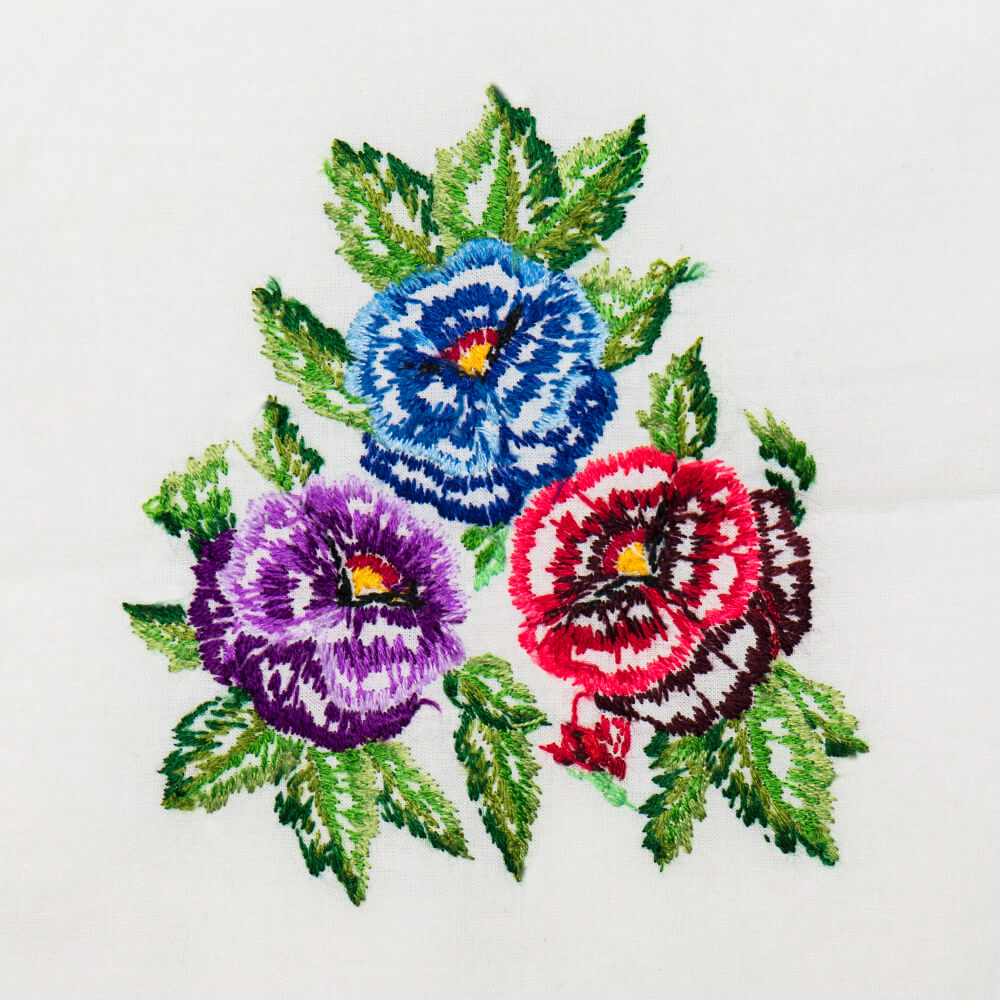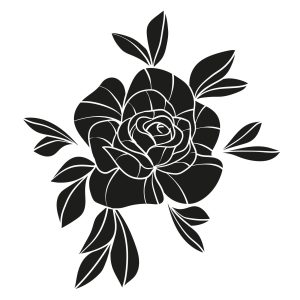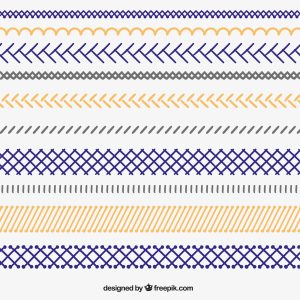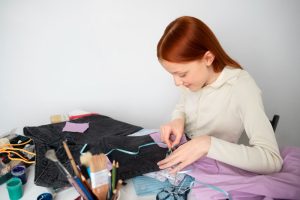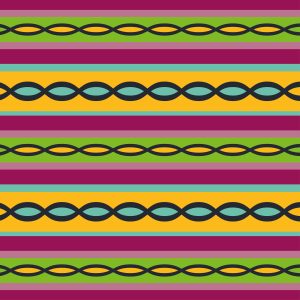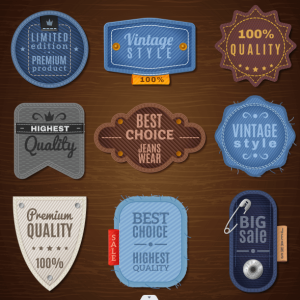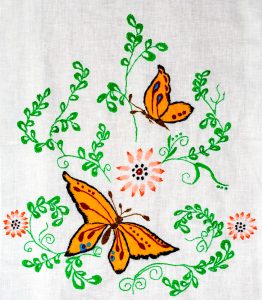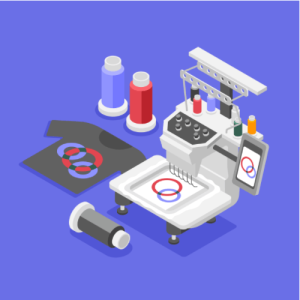3D embroidery turns a flat design into something that literally stands out. It adds texture, shape, and a bold raised look that grabs attention. Whether you’re decorating caps, jackets, or custom apparel, 3D puff embroidery gives your logo or art a sculpted finish that looks professional and premium.
In this guide, you’ll learn everything about 3D embroidery — what it is, how it works, what tools you’ll need, and how to stitch like a pro.
What is 3D Embroidery?
3D embroidery, also called puff embroidery, uses foam under the stitches to create a raised or dimensional effect. Instead of sitting flat on the fabric, your thread stands tall — forming letters or shapes that feel and look three-dimensional.
You’ll often see this technique on baseball caps, jackets, hoodies, and sports apparel, where bold text or logos pop up from the surface.
Learn More: Embroidery Digitizing Services
Why Choose 3D Embroidery?
Adding depth gives your design more character. It creates a premium look that flat embroidery can’t match.
Here’s why many brands choose 3D embroidery:
- It gives a bold and professional appearance.
- Adds texture and visual depth to logos.
- Ideal for simple, thick fonts or shapes.
- Works perfectly on structured fabrics like caps or leather.
If you want your logo to stand out in a crowd, 3D embroidery does the job.
Materials You’ll Need
Before you begin, gather the right tools. For perfect 3D embroidery, you’ll need:
- Embroidery machine (capable of dense stitching)
- High-quality embroidery thread
- Embroidery foam sheets (puff foam)
- Scissors or tweezers
- Stabilizer and fabric
- Digitized design ready for 3D puff
Make sure your embroidery design file is digitized for 3D effects — this is not the same as a regular flat file. The stitches need extra density and spacing to cover the foam properly.
Step-by-Step: How to Create 3D Embroidery
Let’s go step by step to get the perfect 3D puff result.
Step 1: Prepare Your Design
Start with a design that works well with 3D embroidery. Thick, bold letters or shapes are ideal. Avoid thin lines or small text — they can’t hold foam properly and may tear during stitching.
Once your artwork is ready, have it digitized specifically for 3D puff. The digitizer adjusts underlay, stitch density, and start/stop points to make sure the foam stays covered and the edges look clean.
Step 2: Set Up Your Fabric
Choose a sturdy fabric that can handle extra stitching, such as a cap, jacket, or twill material.
Hoop your fabric with a firm stabilizer underneath to prevent movement during stitching. The tighter the hoop, the cleaner your edges will be.
Step 3: Place the Foam
Once the machine is ready, place your foam sheet on top of the area where the 3D design will go.
Make sure the foam color matches the thread (for better blending). You can lightly spray the foam with temporary adhesive to hold it in place.
Step 4: Stitch the Design
Start stitching your design. The first few stitches will tack down the foam. The needle will pierce through and compress it as it goes.
The foam beneath lifts the thread, forming that distinct puff.
Once the design is complete, carefully remove the excess foam around the stitched area — it should tear away cleanly.
Step 5: Clean Up the Design
Use tweezers or small scissors to remove leftover foam bits from the edges. If any foam shows through, lightly heat the design with a heat gun or steam iron — this melts the tiny bits and gives a smooth finish.
Now your 3D embroidery is ready!
Learn More: Vector Art Services
Best Fabrics for 3D Embroidery
Some fabrics handle 3D embroidery better than others.
Here are the best materials for puff stitching:
- Cotton twill
- Denim
- Canvas
- Structured caps
- Leather or faux leather
Avoid thin, stretchy, or delicate fabrics — they can’t support the foam and may pucker.
Pro Tips for Perfect 3D Puff Results
- Use dense satin stitches — avoid fill stitches.
- Pick high-quality foam (2mm–3mm thick).
- Match thread and foam colors for a clean look.
- Avoid tiny details — 3D embroidery works best with bold elements.
- Always use sharp needles to pierce the foam neatly.
These small adjustments make your embroidery look professional and smooth.
Common Mistakes to Avoid
Even a small error can ruin a 3D design. Watch out for these common mistakes:
- Using the wrong stitch density (too thin will expose foam)
- Digitizing a flat design instead of a 3D-specific one
- Overheating the foam during finishing
- Poor hooping, leading to misalignment
A little preparation can save you from redoing the entire project.
Learn More: Patch Services
How 3D Embroidery Elevates Your Brand
3D embroidery instantly adds value to your product. It makes your logo pop, giving your brand a luxury, tactile look. Many fashion labels, sports teams, and custom merch brands use it to stand out.
For businesses, it creates a premium impression on uniforms, hats, and promotional apparel. The 3D detail helps your design grab attention and adds durability that lasts wash after wash.
Care Tips for 3D Embroidery
To keep your 3D embroidered items in great shape:
- Hand wash or use gentle machine settings.
- Avoid ironing directly on the embroidery.
- Store caps or jackets properly to maintain shape.
Taking care of your embroidery ensures your designs stay fresh and raised for years.
Final Thoughts
3D embroidery brings your art to life — literally. It transforms flat stitching into bold, dimensional design. Whether you’re customizing caps, jackets, or uniforms, it gives your brand a signature look that stands above the rest.
With the right tools, foam, and a properly digitized design, anyone can achieve professional-level results.
FAQs
How thick should the foam be for 3D embroidery?
Typically, 2mm to 3mm foam works best. Thinner foam won’t create enough lift, and thicker foam can break needles.
Can any embroidery machine do 3D puff?
Most modern embroidery machines can, as long as they can handle dense stitching and are paired with the correct 3D digitized file.
Is 3D embroidery durable?
Yes, it’s very durable when done correctly. The dense stitches hold the foam firmly in place and resist wear.
What designs work best for 3D puff?
Simple, bold logos, block text, and thick outlines. Avoid fine details or thin fonts.
Can I mix 3D and flat embroidery?
Absolutely! Many designers mix flat and raised elements for a layered, stylish effect.

